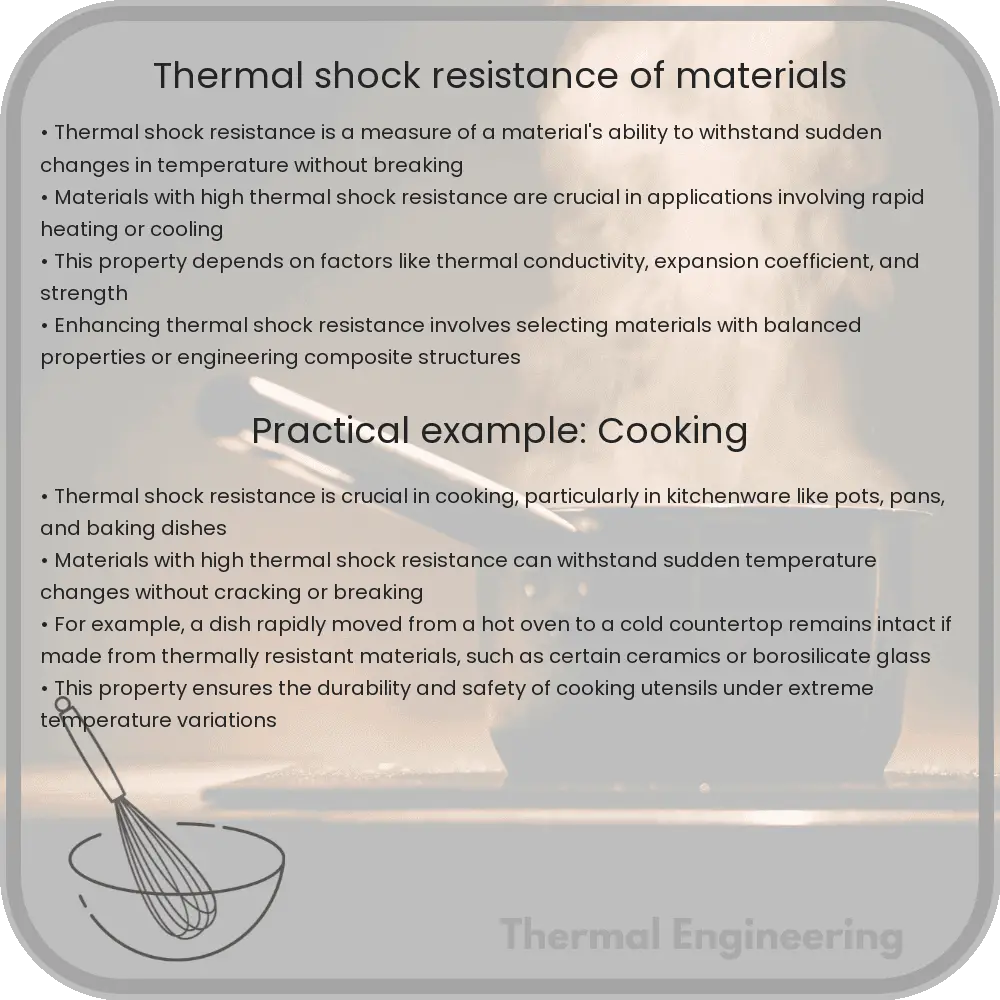Learn how thermal shock resistance allows materials to endure rapid temperature changes without damage, crucial for various industrial applications.

Understanding Thermal Shock Resistance in Materials
Thermal shock resistance is a crucial property for materials that are exposed to rapid temperature changes. This characteristic determines a material’s ability to withstand sudden changes in temperature without suffering damage. Important in a range of applications—from aerospace components to kitchenware—thermal shock resistance informs decisions about material selection in environments where thermal stress is a concern.
What Causes Thermal Shock?
Thermal shock occurs when a material undergoes a rapid temperature change, leading to the development of stress within the material due to thermal expansion or contraction. When the material is heated, it expands; when cooled, it contracts. If different parts of a material change temperature at different rates (for example, the outside cools or heats up faster than the inside), this creates internal stresses. When these stresses exceed the material’s strength, cracking, spalling, or other types of failures may occur.
Understanding the Factors Influencing Thermal Shock Resistance
The resistance of a material to thermal shock is largely influenced by its:
- Thermal Conductivity: Materials with high thermal conductivity can quickly transfer heat throughout their structure, reducing temperature gradients and associated stresses.
- Thermal Expansion Coefficient: Materials with lower coefficients of thermal expansion experience less expansion or contraction for a given temperature change, resulting in lower induced stresses.
- Mechanical Strength: Higher mechanical strength materials can withstand greater stress before failing, improving thermal shock resistance.
- Elastic Modulus: The stiffer the material, the less it can deform under stress, potentially leading to increased susceptibility to cracking under thermal shock.
- Specific Heat Capacity: A higher specific heat capacity means that more heat energy is required to change the material’s temperature, which can mitigate rapid temperature changes.
Quantifying Thermal Shock Resistance
The thermal shock resistance of a material can be quantitatively assessed using the following formula:
R = (K * σt) / (α * E * ΔT)
Where:
- R is the thermal shock resistance,
- K represents thermal conductivity,
- σt is the tensile strength,
- α is the thermal expansion coefficient,
- E stands for the elastic modulus, and
- ΔT is the temperature change.
This equation highlights that the better a material’s ability to conduct heat and withstand mechanical stress, and the lower its expansion with temperature changes, the higher its resistance to thermal shock will be.
Applications Across Industries
Materials with high thermal shock resistance are essential in many industries:
- Aerospace: Components like turbine blades that experience rapid temperature changes.
- Electronics: Devices that heat up and cool down rapidly, requiring materials that can handle such cycles without degradation.
- Cookware: Utensils and containers that are subjected to sudden temperature changes when used on stoves or ovens.
- Building Materials: Elements like firebricks used in high-temperature industrial processes.
Understanding and selecting materials based on their thermal shock resistance is essential for ensuring longevity and performance in environments subject to frequent or dramatic temperature fluctuations. Through continued research and development, materials engineers are continually enhancing the thermal shock resistances of materials to meet the ever-growing demands of modern technology and manufacturing processes.